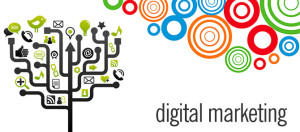This week I had the pleasure of reading a new report from Smart Insights on the State of Digital Marketing 2015 and decided to dig in a bit further with an interview. For those of you who aren’t familiar with Dave or Smart Insights – Dave Chaffey is CEO of Smart Insights, a publisher of planning templates and articles focusing on Digital Strategy with channels on B2B Marketing and Marketing automation. The following is an excerpt from our discussion, I hope you enjoy it.
1) What do you think the biggest change to Digital Marketing for B2B firms will be in the next year?
I think content personalization is the biggest opportunity into 2016 for B2B Marketers. Most B2B service marketers know the value of tailored landing pages to drive traffic and capture leads for niche B2B buyer personas. Let’s face it, these options have been around for fifteen years – your question takes me back to a workshop I did for Siebel systems around then, before they became part of Oracle. We were looking at optimizing targeted landing pages through Siebel for different search behaviors even then before some of today’s well-known marketing automation services like HubSpot, Marketo and Salesforce were even established. These types of services and many others have made scalable lead generation affordable for businesses, but I often feel the potential for lead scoring and lead nurture through personalization isn’t being exploited as much as it could.
At SmartInsights.com, for example, our home page and member benefits pages are tailored by role based on their registration – so a marketing manager gets a different message and different content than say an agency manager. We setup our personalization rules in WordPress, but for marketers who don’t role their own there are many plugins and services to support greater B2B personalization, for example BrightInfo, Evergage and Marketizator to name three players. Again this approach isn’t new technically innovative, but it is underexploited. It is getting more sophisticated with automated content recommendations based on profile and content consumption – for example Idio can be used by larger businesses for this.
2) What do you see as the biggest mistakes being made in Digital Marketing by B2B firms?
The most common mistake I see is getting the balance of Content Marketing activities wrong. We all know content marketing is at the heart of digital marketing, yet often content marketing strategies don’t invest sufficient in the right range of content across the buying cycle and by content I am referring to our Content Marketing Matrix which helps businesses review the best types. The CMM also helps you think about the right balance of what Michael Stelzner of Social Media Examiner called nuclear and primary fuel. You need to invest in that emotion-inducing or shareable content that cuts through otherwise others who have made that investment will win across the channels whether that is SEO, Social media or Email marketing.
Then there’s content distribution… putting the investment into marketing the content you have invested in. Here there must be the right balance between paid, owned and earned media. Paid media, remarketing or retargeting through AdWords, LinkedIn or Facebook helps remind prospects about your services so it’s a mistake to miss this – it gives probably the best paid digital media ROI available. With Earned media it’s about putting the time into influencer outreach – it’s a popular buzz word, but few do this as well in my experience.
3) What one Digital Marketing tactic should a B2B Marketer adopt in the next year?
Simple – Retargeting using paid media as mentioned in my previous answer – if you’re not doing already it’s a great opportunity. If you are, there are new options available all the time, like the recent launch of the LinkedIn ‘Lead Accelerator’. You can review the options on our Content Distribution matrix.
4) What one Digital Marketing tactic should a B2B Marketer stop in the next year?
That’s tricky Paul, because we believe that any tactic can be optimized and most techniques can be made to work. If you’re not getting ROI from digital media that has to stop! But I’ll give you a simple marketing automation technique that any B2B marketer can apply – stop sending out welcome sequences that aren’t targeted, i.e. one-size fits all welcome emails. Since you collect the profile information of a prospect when they subscribe it’s a ‘no-brainer’ to target by role or vertical or need – whatever will give you the biggest uplift and different points in the lead nurturing.
Talking of Marketing Automation, we have a new survey on the opinions on Marketing Automation of B2B marketers in 2015 just launched. We’d love it if your readers can share their experiences and of course they’ll get the research report when it’s completed.







